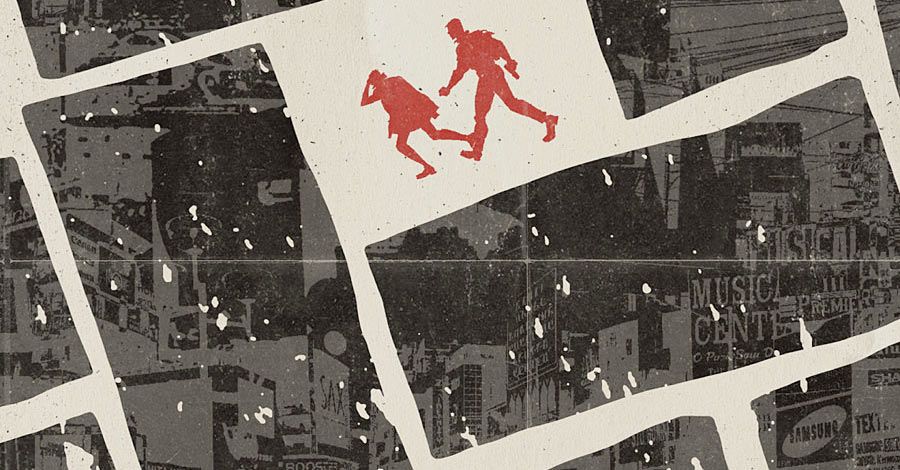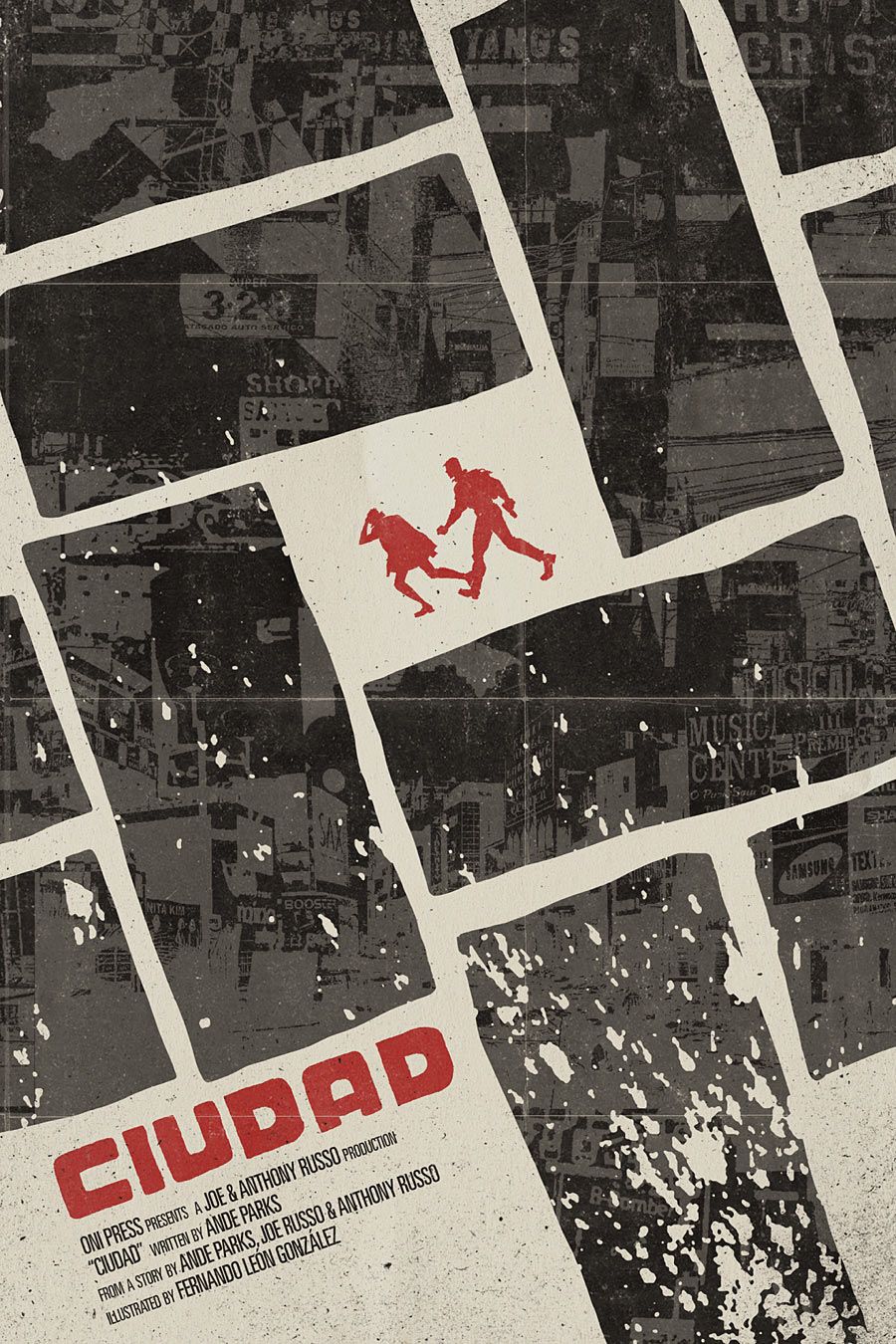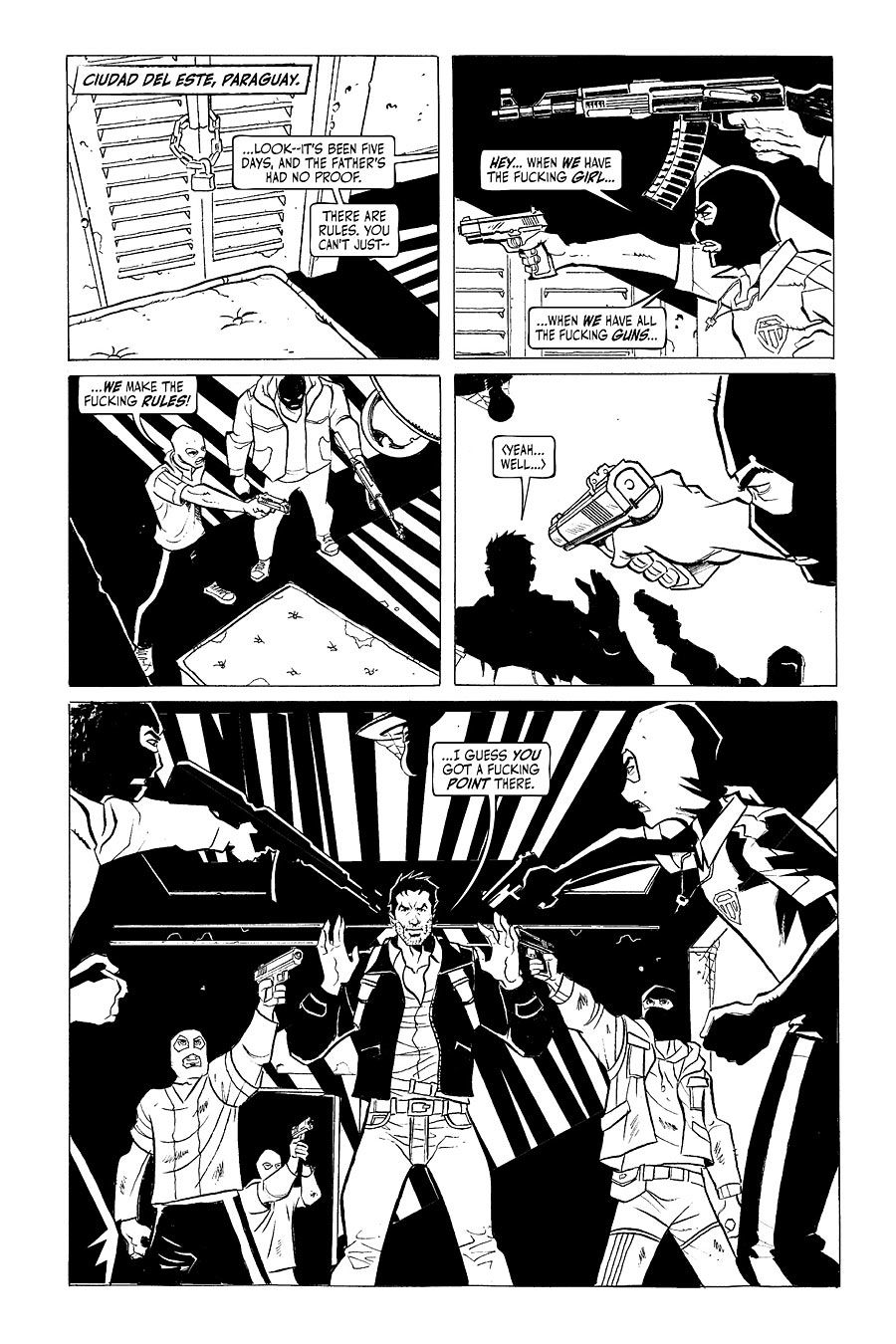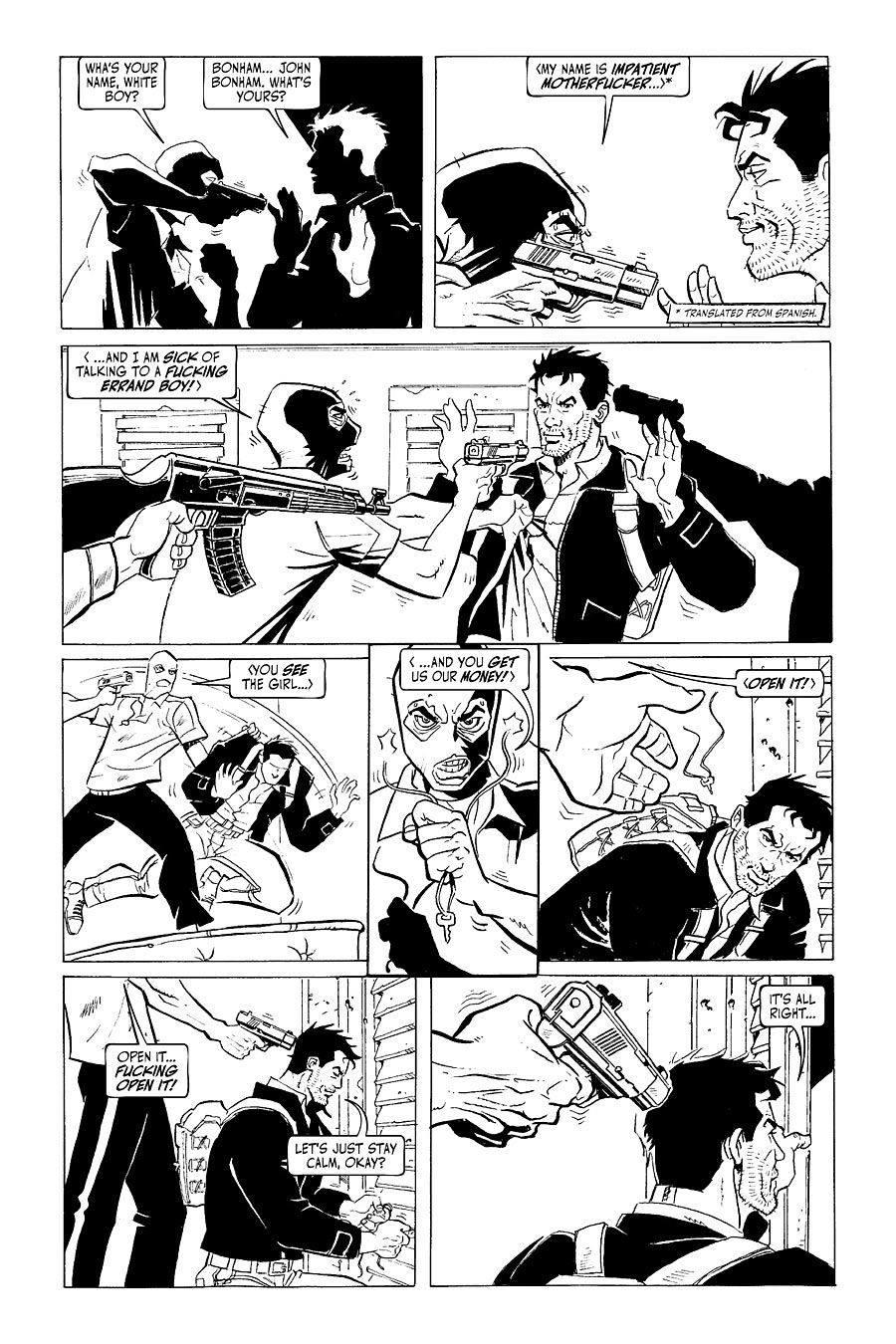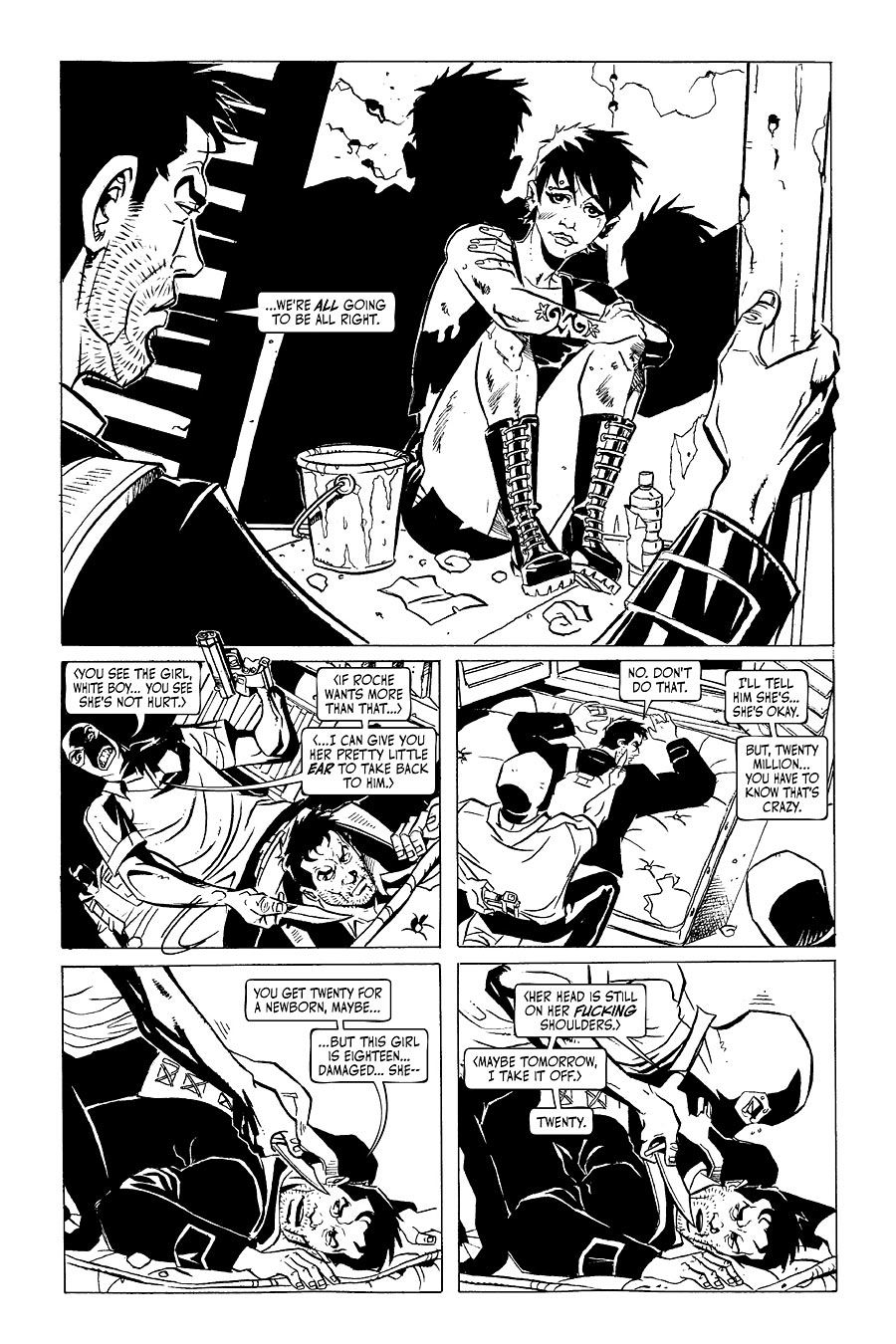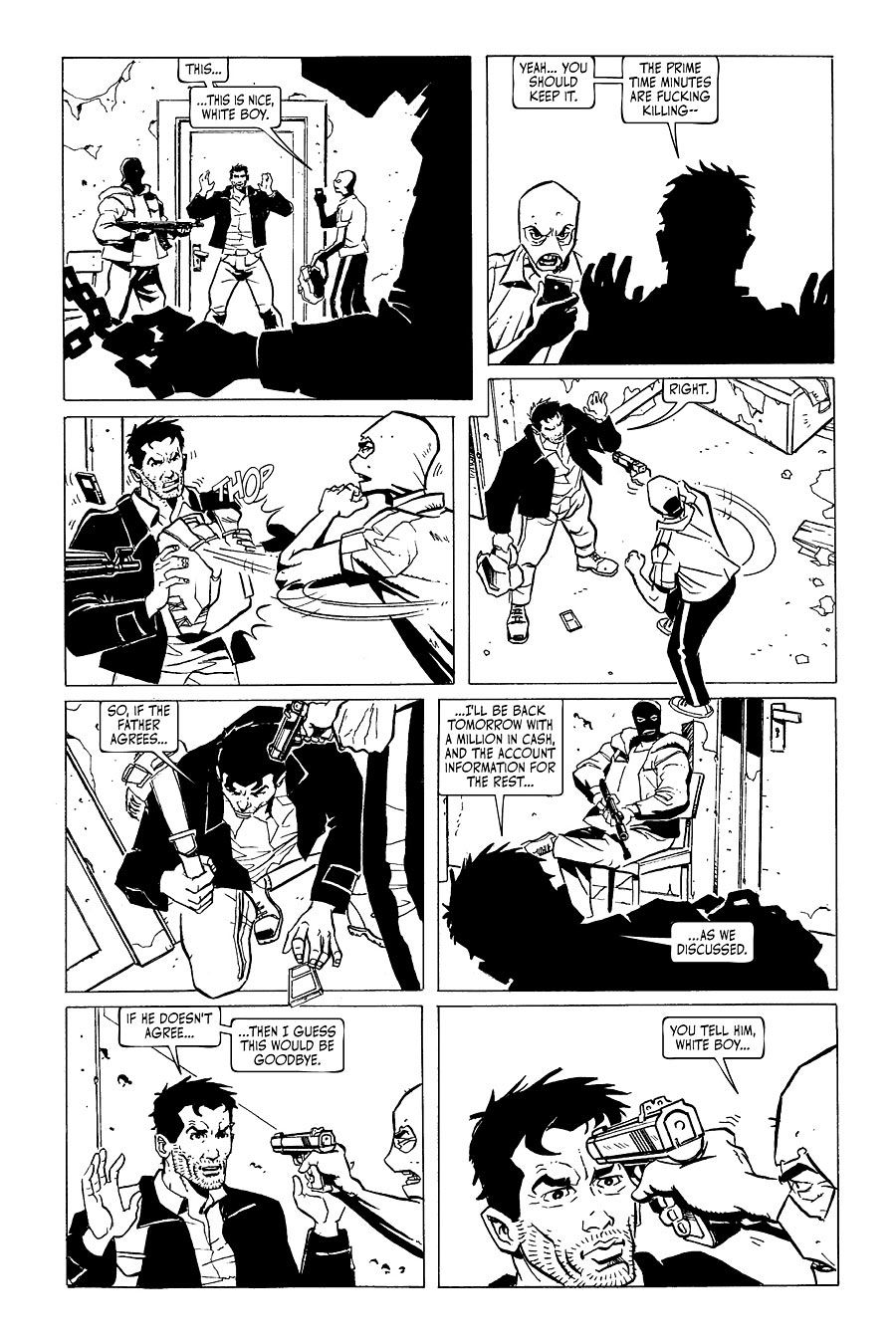The world of "Ciudad" is not a gentle one. Co-written by Ande Parks and Joe & Anthony Russo with art by Fernando León González, the Oni Press-published graphic novel is set in the real life Paraguay town of Ciudad del Este, a rough-and-tumble city populated with citizens trying to run the show through whatever methods necessary (usually violence), or simply trying to get by and survive.
Ciudad is not a place for the faint of heart to call home, and the strength of the city is reflected in the tale's protagonists, Tyler Rake and Eva Roche. Rake is a jack of all trades who was hired to get Roche away from kidnappers and out of the city. He's a man used to completing the mission and moving on, but things don't go as planned when he tries to leave Ciudad del Este with Roche.
In a discussion about the book with Parks and the Russo brothers, the writers opened up about the inspirations for Rake, constructing the story's larger than life city, and the status of the film version of the story the directors have been developing for half a decade.
CBR News: How did "Ciudad" come about, and how did it transition from a movie concept to a graphic novel?
Joe and Anthony Russo: We've been collecting comics since we were kids, and some of the most influential books we bought were graphic novels. So when we met the Oni guys, and they brought up the idea of us getting involved with a graphic novel, first, we jumped at the chance. And second, we dipped into our cache of long gestating ideas. We looked for the one we thought would translate best to the medium. We felt that the hermetic nature of the "Ciudad" story, combined with the genre, would make a good fit. We partnered up with Ande Parks, whose "Union Station" is brilliant, and that's how the book came to be.
Ande Parks: Oni reached out to me to develop it with them, since I was Oni's historical fiction/research/realism guy. The Russos are incredibly nice, collaborative guys, and they really welcomed me into the process. We got on the phone a few times to bash out the basic beats of the story -- this is all based on their initial ideas. We shot ideas back and forth via email. We got on the phone with experts in the actual city of Ciudad del Este. This went on for a while, until the idea got optioned by Paramount.
Once it gets optioned, people start wanting a script, like, yesterday. So, I went out to L.A. to meet with the brothers in person. That was more than five years ago, now. We spent a few days in a room together, had a couple of dinners, and so on. By the time I left California, we had agreed on enough of an outline that I could go write the graphic novel, and they could go write the screenplay. I think I finished the script in 2010. It took a while to find the right artist.
In other words, it has taken a while for this book to come together. It's really exciting to see it coming out now and to see how people are reacting to the work we put in along the way.
Ande, you wrote the final script, but Joe and Anthony Russo developed the story with you. What was that collaboration like?
Parks: It was really a dream experience. Joe and Anthony were very generous. They not only let me do my own thing with this idea that they had come up with, but they were encouraging at every step.
Assuming the film version of "Ciudad" gets made at some point, which I certainly hope happens, it will be very interesting for people to see how the two different forms of the story developed. It's the same story, but handled in very different ways. I think each stands on its own.
As far as I know, this is a unique situation. The book isn't an adaptation of a movie or a screenplay. I think you can relate the graphic novel and the screenplay to twins who were separated at birth. They have the same DNA, but they've been raised by different people and so have become very different things.
The story often centers on action and it jumps between locations. What were some of the challenges of conveying the scope of the plot?
Russos: Comic frames are incredibly dynamic. We grew up on them. We love the storytelling that's conveyed through freezing a moment in time and moving through a book, moment by moment. Every medium has its limitations. It's what makes the medium unique. We never felt limited.
Parks: I was very determined to tell this story in a way that worked for the medium we were using. Hopefully, the book has a cinematic feel, but we didn't want to go all widescreen or anything like that. When you do that, you're cheating yourself of the pacing and other techniques that are unique to comics.
The action stuff is challenging. Things like car chases work really well on film, but maybe not quite as well in comics. So, we tried to play to our strengths. The fight sequences get more time than the car chases do. That might be reversed if/when the film gets made.
Ciudad del Este is very much a character in the story, genuinely dangerous and a truly difficult place to live. Why do you think people who aren't criminals call it home?
Parks: That's a great question. I could have been able to answer it more effectively, but I turned down the chance to go see Ciudad del Este firsthand.
When we were in the research phase, the Russos and I got on a conference call with a former CIA guy who knew the area very well. He said, "The best way to get to know the place is to just come on down with me for a few days." As soon as we hung up, I sent the brothers an email that said they might have the wrong guy because there was no way I was going down there. They said they weren't either; that's why we were doing things like conference calls with former CIA dudes!
If the film gets made, they may well go there to look around -- I don't know if they'd film there -- but that would probably be done with a large group and some security presence.
Tyler Rake is more or less a one man army. We don't see his past, but it's clear he's been through a lot. Did you create a backstory for him, and what kind of training has he had?
Parks: We did spend a good deal of time discussing Tyler's past. He's a very skilled sniper, and he's had a career within the intelligence community before going freelance. We figured that stuff out, but we only wanted to hint at it in the book. Maybe we'll do another one, and we'll be able to drop more info. I'm ready to write Tyler again.
Russos: He's really inspired by the flawed heroes found in movies by filmmakers like [Sam] Peckinpah and [Sergio] Leone, two of our favorite filmmakers growing up. The existential code that drives Tyler is the same code that drives the Wild Bunch or The Man With No Name.
Ande, how did Fernando León González come to work on the book? How did his style affect the creation of the story?
Parks: Oni found him, after a long search. He brings incredible energy to the story. I have little patience for photo tracers in comics. I have nothing against guys who use photo reference. Hell, Alex Raymond and Stan Drake used photo reference. They made the work their own, though. Too many artists today fail to do that. They become slaves to the photos they take, or worse yet, the photos they steal from magazines or websites. That's not comics to me. I like cartoonists. Fernando is a damn good cartoonist. "Ciudad" is lively because of his work. The action sequences pop. I'm very grateful for him.
Speaking of that action, there are a few instances where wordless fights and chases span several panels. How did you and Fernando approach those scenes?
Parks: I think it's important to shut the hell up when it best serves the story. I trust the artists I work with to tell the story, whether I'm blathering on or not. I do think, because I made my living as an artist for so long, that I write with visuals in mind, and that helps the artist see how things can work as they lay the book out.
What is the status of the film version of "Ciudad," and is Dwayne Johnson still set to star in it?
Russos: Dwayne is not currently attached. We are in the process of setting up the film with us as producers.

